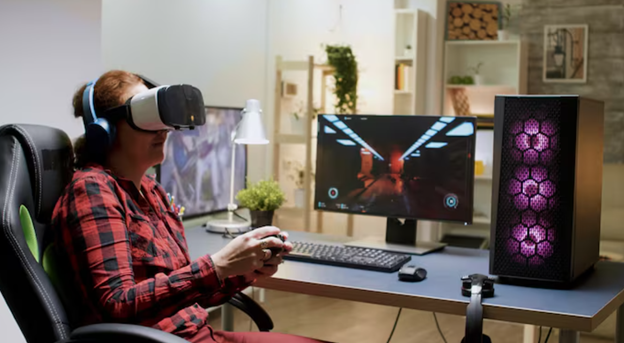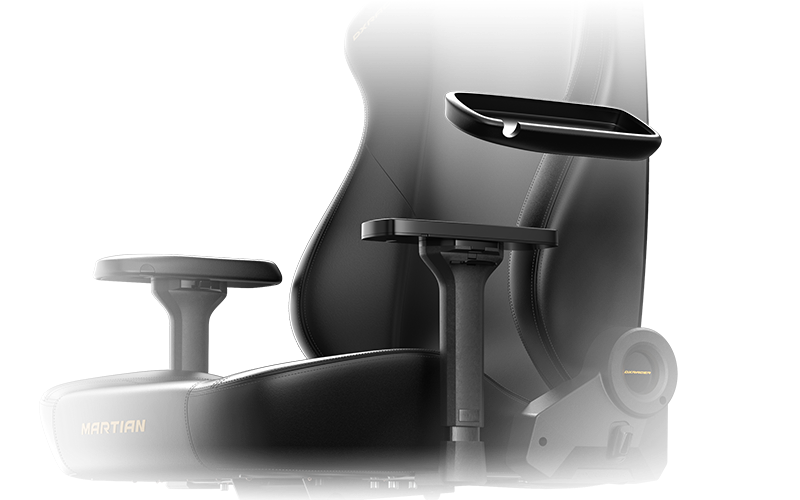
Artificial intelligence (AI) has already reshaped the gaming world through dynamic storytelling, smarter NPCs, and adaptive difficulty.
But a new wave of innovation is happening outside the screen, within the physical gaming setup itself.
AI is now being used to enhance ergonomics, health tracking, and real-time user adaptability through smart gaming accessories, particularly intelligent gaming chairs.
These aren’t just furniture; they’re becoming data-driven wellness tools integrated into the gaming experience.
In this article, we explore the technical evolution of AI-powered gaming chairs, the systems behind them, and how they are shaping the future of interactive gaming environments.
The Convergence of AI and Hardware in Gaming
Traditionally, AI’s role in gaming has been confined to software: procedural content generation, in-game opponents, and decision trees.
Today, AI is extending into hardware ecosystems using embedded sensors, machine learning models, and human-computer interaction (HCI) frameworks.
This shift means your chair is no longer passive; it’s a smart peripheral, capable of collecting data, learning user behavior, and adapting itself accordingly.
Smart Posture Correction Using Machine Learning
A modern AI gaming chair isn’t just about looking cool anymore; they’re loaded with sensors like pressure pads, accelerometers, and gyroscopes that constantly keep an eye on how you’re sitting.
With the help of machine learning, the chair can tell when you’re starting to slump forward, lean to one side, or just sit in a way that might strain your back. Some even run advanced posture checks in real time and adjust themselves on the fly. That could mean tilting the seat a little, firming up the lumbar support, or sending you a gentle reminder that it’s time to sit straight again.
This idea fits perfectly with what DXRACER has always been about: comfort and support for gamers who spend long hours in their chairs.
You’re in the middle of an intense match, leaning forward without noticing, and suddenly the chair gives you subtle support to your lower back so you don’t feel sore later. Or maybe after a few hours, it shifts the seat angle just enough to take pressure off your hips.
Behavioral Learning and Personalization
Through reinforcement learning and user profiling, AI chairs can begin to predict individual posture patterns over time.
After a few sessions, the system fine-tunes itself to your comfort preferences. Parameters like lumbar firmness, armrest angles, and seat incline can all be automatically optimized based on previously learned user data.
This personalization ensures an adaptive experience that gets better the more you play.
Immersive Feedback: Temperature & Haptics
High-end gaming chairs are integrating thermal regulation and tactile feedback systems. AI-driven temperature control uses environmental data and body temperature estimates to auto-adjust cooling or heating.
Additionally, haptic engines powered by AI can synchronize subtle vibrations with in-game events, adding a layer of physical immersion without disrupting gameplay.
This feature is particularly popular in racing, FPS, and VR gaming experiences.
AI-Assisted Health and Break Management
Gamers often lose track of time during intense sessions, risking fatigue and strain. AI systems now assist by monitoring sitting duration, detecting inactivity patterns, and recommending breaks using context-aware timing (e.g., during loading screens or low-intensity gameplay).
Some systems even use natural language processing (NLP) to allow voice-based reminders or stretch suggestions—integrated via assistants like Alexa or Google AI.
Privacy and Ethical Considerations
With all this data being collected, from posture patterns to movement tracking, data privacy becomes a critical issue. Manufacturers must ensure data anonymization, local processing where possible, and transparent opt-in data usage policies. As these tools evolve, ethical AI frameworks must be followed to maintain trust and user agency.
The Rise of Sensor-Driven Gaming Ecosystems
Intelligent chairs are part of a broader shift toward sensor-driven gaming ecosystems. Smart desks, lighting, and even AI-controlled sound systems are now converging into integrated setups.
AI Comfort in eSports and Streaming
In professional eSports and streaming, where gamers sit for 6–12 hours a day, ergonomic precision is crucial. AI-integrated chairs support muscle memory, long-term posture health, and consistent focus.
Streamers also benefit from real-time adaptive comfort, reducing fatigue while enhancing expressiveness on camera, a subtle but powerful performance enhancer.
Conclusion: A Smarter Way to Sit and Play
As AI continues to extend its reach into physical hardware, comfort is no longer just about padding and recline angles; it’s about intelligent interaction.
From machine-learning-based posture correction to voice-controlled adjustments, AI is making gaming chairs more than just accessories; they’re becoming wellness tools, UX enhancers, and part of the core gaming experience. And with further advancements in sensor miniaturization, real-time inference, and user modeling, the future of gaming comfort is not only smarter, it’s deeply personal.





